College Sports
$2.8 billion House v. NCAA settlement hangs in balance as federal judge extends response deadline
The marathon legal battle regarding player compensation and the makeup of college athletics in a landmark, multibillion-dollar antitrust case took another turn Monday night. A federal judge granted attorneys involved in the $2.8 billion settlement an extension to to file “summary judgement and Daubert briefing.” With both sides still waiting for a final judgement and […]
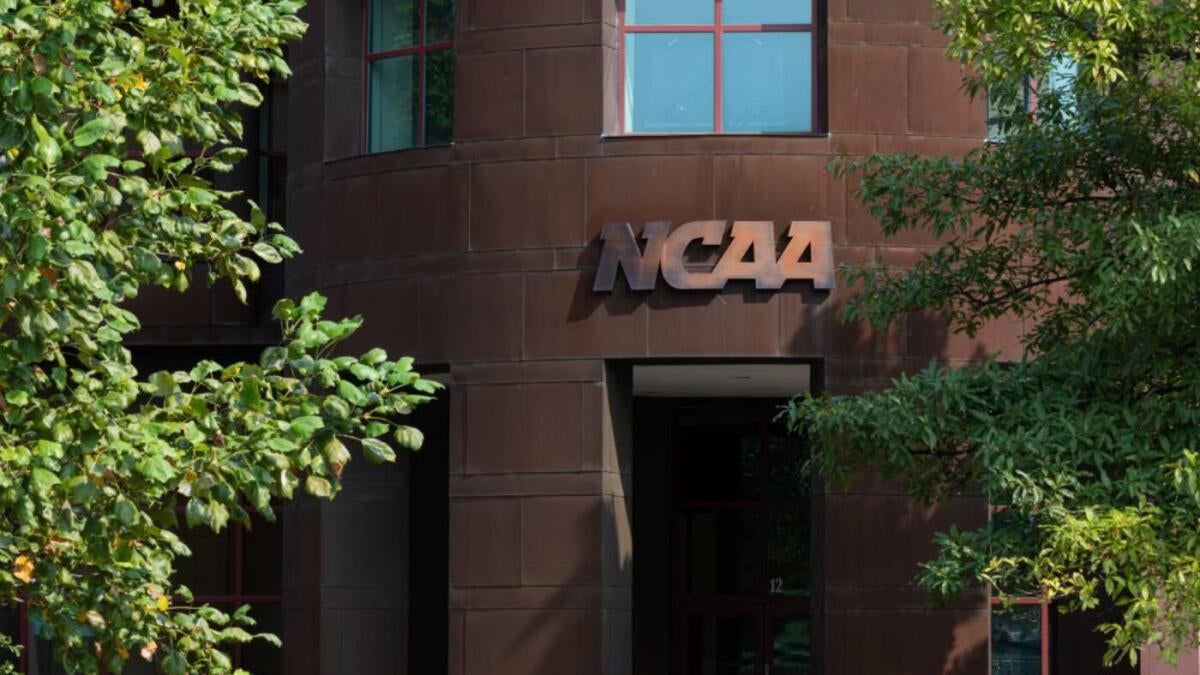
The marathon legal battle regarding player compensation and the makeup of college athletics in a landmark, multibillion-dollar antitrust case took another turn Monday night.
A federal judge granted attorneys involved in the $2.8 billion settlement an extension to to file “summary judgement and Daubert briefing.” With both sides still waiting for a final judgement and the original deadline coming on June 6, the new June 27 date provides proper time for a potential appeal. It also pushes the timeline for a potential resolution even closer to the expected start of revenue sharing payments to athletes on July 1.
Both sides came to a compromise on tweaking the aspect of roster limits in the settlement on May 7, which they hope will convince a federal judge to grant final approval. The judge twice voiced concerns over proposed roster limits, a small but significant aspect of the deal that will enable schools to pay athletes a portion of their media revenues, capped at $20.5 million.
Under the compromise, schools would be allowed — but not required — to reinstate players who were cut from rosters during the 2024-25 academic year without those players counting against new roster limits set to be implemented July 1. Purged players exempt from roster limits can also transfer to new schools.
The key language in the brief, however, is that roster-limit exceptions are to be made at a school’s discretion. It remains to be seen if the brief will satisfy Judge Claudia Wilken of the Northern District of California, who specifically asked attorneys to “grandfather” all players into the deal, after twice delaying a decision on whether to approve the settlement in April.
“In other words, there are no guarantees that designated student-athletes will get or maintain roster spots,” the NCAA and power conference’s counsel wrote in a supplemental brief Wednesday. “But that does not adversely affect any injunctive relief class member.”
High school seniors who were promised scholarships that were later rescinded because of the proposed roster limits will also be exempt.
Now, college athletics waits – again – for a decision from federal court. Wilken gave preliminary approval in October, speaking in favor of most aspects of the deal. However, she has twice delayed final approval because of language tied to roster limits, which could lead to an estimated 5,000 players being cut from sports across the NCAA.
Several objectors testified April 7 against replacing scholarship limits with roster limits at a settlement hearing in the District Court of Northern California. In a brief filed April 23, Wilken ordered attorneys to develop a plan to “grandfather” current players into the agreement, allowing schools to temporarily exceed new limits as part of a phase-in solution for rosters. A two-week negotiation ensued.
If Wilken is not satisfied with the parties’ resolution and declines final approval, the case may advance to trial, a daunting prospect for the NCAA, which has been bludgeoned legally over student-athlete compensation and lambasted by the Supreme Court over the last five years. If the NCAA and power conferences lose in trial, the parties could be liable for $20 billion in damages.
If the settlement is not approved, schools may soon turn to their state governments to help legalize direct pay to players, who have planned to be paid a share of the $20.5 million pool next fall.
Wilken’s request on April 23 to renegotiate aspects of roster limits sent shockwaves across the country, complicating matters for many schools that had already begun cutting players from rosters. Under the preliminary settlement released in October, football rosters were set to shrink to 105 players, meaning as many as 30-plus players would be cut at each school. Even before the judge’s final approval, schools began to cut players in the spring in preparation for the settlement’s implementation on July 1.
Putting the toothpaste back in the tube could prove difficult for athletic departments. Some purged players landed at new schools, but many remain without a home, hoping to land again at their former schools. Most schools might be unwilling to re-sign players and spend extra scholarship money – as well as room and board, meals and health care – that balloon already-tight budgets.
In a brief filed April 23, Wilken was unmoved by the schools’ plight, writing that “any disruption that may occur is a problem of Defendants’ and NCAA members schools’ own making.”
The settlement’s touchstones remain uncchanged. Starting July 1, NCAA schools can share as much as $20.5 million in revenue with their athletes, and former athletes who played between 2016 and 2024 will be paid $2.8 billion in back payments if the settlement is approved.
Each school’s revenue-sharing cap will increase 4% each year during the 10-year agreement.
What is House v. NCAA?
The class-action antitrust lawsuit was filed in 2020 by Arizona State swimmer Grant House and women’s college basketball player Sedona Prince seeking an injunction against the NCAA and the Power Five conferences. It sought to lift restrictions on revenue sharing of media rights revenues.
Powerful antitrust attorneys Steve Berman and Jeffrey Kessler represented the plaintiffs.
If approved by the judge, the settlement would resolve three antitrust lawsuits: Carter v. NCAA, House v. NCAA and Hubbard v. NCAA.
What’s next?
A decision: Judge Claudia WIlken will study the brief and decide whether to grant final approval to the House v. NCAA settlement, which was first introduced in October and has included months of negotiations.
Revenue-sharing formula: Many schools are preparing to mirror the back-payment formula in their revenue-sharing model for the future. That means roughly 75% of future revenue will be shared with football players, 15% to men’s basketball, 5% to women’s basketball and 5% to all remaining sports. Those numbers will differ from school to school, but most power programs have shared similar models with administrators.
CBS Sports has learned one school is preparing to share more than 85% of the $20.5 million pool with football players – a reflection of the percentage of annual revenue the sport generates for its athletics department.
More lawsuits: Concerns over Title IX and antitrust issues will continue after the settlement is approved. However, instead of the NCAA being the target, individual schools may soon become the focus of litigation. Each school will split the revenue pie based on its own formulas, meaning a women’s basketball player may sue a school if they believe they are not receiving their fair share of cash. The same can be said for a football player if their revenue share is lower than that of a rival player at another school.
The White House is set to weigh in: The NCAA has long lobbied Congress to pass legislation protecting the organization and its members from antitrust litigation. Now the White House has zeroed in on college athletics.
President Donald Trump is creating a presidential commission on college athletics to find solutions for “issues ailing the ecosystem,” according to Yahoo! Sports. Trump was considering an executive order to regulate NIL after meeting with former Alabama coach Nick Saban, according to the Wall Street Journal. Sen. Tommy Tuberville, the former Auburn coach, also met with Trump last week to discuss college athletics. Steve Berman, a lead attorney for the plaintiffs in the House case, criticized the president’s potential actions, saying that an executive order would lead to more lawsuits.
Sen. Ted Cruz is reportedly drafting a bill that could offer the NCAA limited antitrust protection. It’s not clear how Trump’s plans may affect Cruz’s draft.
New enforcement model: The power conferences are expected to launch soon the College Sports Commission, an enforcement arm to police the settlement among its schools. The new organization effectively replaces the NCAA regarding NIL enforcement, and will monitor NIL deals between players and third parties, and oversee revenue-sharing practices at schools. This new organization will also penalize schools and individuals who break rules.
Who is footing the bill? The NCAA is responsible for 40% of the $2.8 billion settlement, and the remaining 60% will come from reducing its revenue distributions to the 32 Division I conferences over the next 10 years ($1.6 billion). The NCAA is utilizing a formula based on revenue distribution presented to each league over a nine-year period starting in 2016, which leans heavily on basketball units tied to NCAA Tournament participation, according to Yahoo Sports. The Power Five conferences – ACC, Big Ten, Big 12, Pac-12 and SEC – will pay 24% of the overall damages, followed by the Group of Five at 10%.The FCS is on the hook for 14% and non-football conferences in Division I will pay 12% of the overall agreement, according to documents reviewed by CBS Sports.
House v. NCAA settlement terms
- $20.5 million salary cap for revenue-sharing at each Division I school (starting July 1)
- $2.77 billion in back payments to as many as 390,000 athletes who played an NCAA sport between 2016 and 2024.
- Outside NIL deals of more than $600 must be vetted by a third-party clearinghouse
- NIL deals must meet “fair market value.” How that fair-market value is determined is the subject of intense debate.
- Unlimited scholarships with new roster size limits
- At least 88,104 of approximately 390,000 athletes have filed back-pay claims, plaintiff attorney Steve Berman said in April. That number was expected to reach 118,879 at the end of April.
- 343 athletes opted out of the settlement
College Sports
Scottie Scheffler wins The Open, captures fourth major victory
Scottie Scheffler just capped off one of the best four-day stretches of his pro career. On Sunday at the Royal Portrush Golf Club in Northern Ireland, Scheffler shot a 68 in the final round of The Open Championship, securing his fourth major victory in the process by finishing 17-under. He beat out Harris English (13-under) […]

Scottie Scheffler just capped off one of the best four-day stretches of his pro career.
On Sunday at the Royal Portrush Golf Club in Northern Ireland, Scheffler shot a 68 in the final round of The Open Championship, securing his fourth major victory in the process by finishing 17-under. He beat out Harris English (13-under) and Chris Gotterup (12-under) to win by four strokes. Rory McIlroy, the home favorite, made a push throughout the week, but ultimately finished tied for seventh at 10-under.
Scheffler became just the fourth-ever player to shoot 68 or under during every round at The Open. He posted a 68 on Thursday, a jaw-dropping 64 on Friday, a 67 on Saturday, and another 68 to close out the event on Sunday. Only Collin Morikawa (2021), Henrik Stenson (2016), and Jesper Parnevik (1994) have accomplished the same feat.
The 29-year-old Scheffler likely created an even bigger gap atop the World Golf Rankings with Sunday’s win. He started this season with two career Major Championship wins in The Masters already under his belt. After a fourth-place finish at Augusta National, he won his first PGA Championship at Quail Hollow. Now the Champion Golfer of the Year with the Claret Jug going into his trophy case, Scheffler is just a U.S. Open victory away from a career Grand Slam.
And how about this for a crazy stat? The NBC broadcast noted that it took Scheffler 1,197 days between winning his first major and his fourth — the exact same amount of time it took Tiger Woods to do the same. Scheffler is now 10-0 when leading going into the final round. Only Gary Player, Jack Nicklaus, and Woods have won four majors before turning 30.
The Open Championship final leaderboard
Join KSR Plus! With a KSR Plus membership, you get access to bonus content and KSBoard, KSR’s message board, to chat with fellow Cats fans and get exclusive scoop.
College Sports
Letters: LSU money could spoil fun of college sports | Letters
The impressive financial gymnastics Taylor Jacobs, who oversees name, image and likeness, and her team executed to enable LSU to be financially competitive in paying their athletes to play gives a literal definition to winning at all costs. There are liabilities associated with pay to play that should be considered. Amateurism in college and high […]
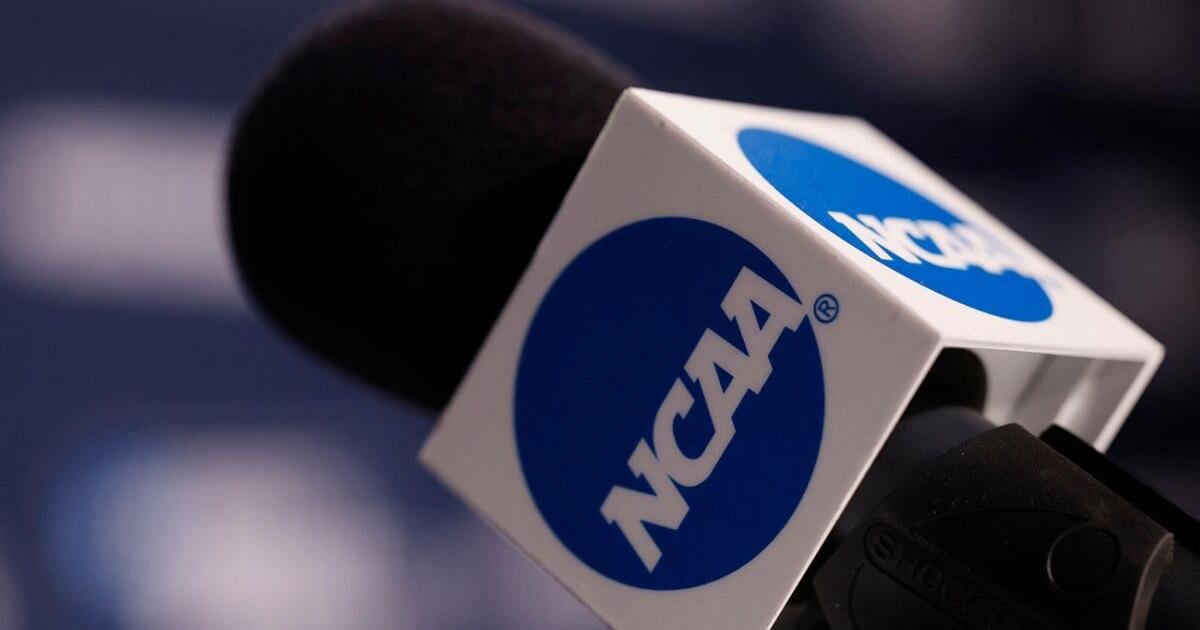
The impressive financial gymnastics Taylor Jacobs, who oversees name, image and likeness, and her team executed to enable LSU to be financially competitive in paying their athletes to play gives a literal definition to winning at all costs.
There are liabilities associated with pay to play that should be considered. Amateurism in college and high school sports no longer exists. Excelling at sports used to be about fulling a dream to be the best through hard work and sacrifice and to experience the sheer joy of accomplishment. Now, competing is complicated by a paycheck.
Have college athletes become mercenaries playing for the highest bidder? The money has become preeminent in discussions with players and has irrevocably changed players’ relationships with coaches and their teams. Forget about mentorship and team loyalty, just show me the money.
LSU athletes are professionals by definition. They are contract workers but could become employees if they are allowed to collectively bargain. How will that work?
Wining is a good thing except when the costs are too high.
JIM ROBERTS
St. George
College Sports
Bob Johnson Hockey School celebrates 60 years in Aspen
The Bob Johnson Hockey School is celebrating 60 years in Aspen in 2025.Bob Johnson Hockey School/Courtesy photo In terms of hockey memories, Mark Johnson has a lot more to pull from than most. On top of being one of the most decorated college hockey coaches of all-time — leading the University of Wisconsin women to a […]

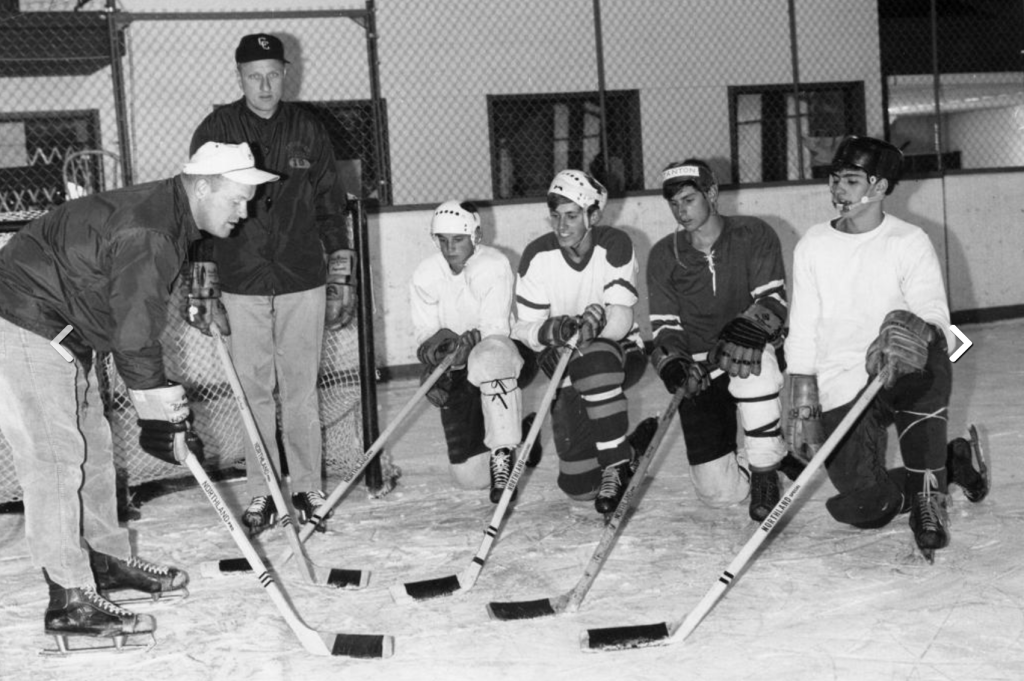
Bob Johnson Hockey School/Courtesy photo
In terms of hockey memories, Mark Johnson has a lot more to pull from than most.
On top of being one of the most decorated college hockey coaches of all-time — leading the University of Wisconsin women to a record eight national championships — and a key member of the U.S.’s gold-medal winning “Miracle on Ice” Olympic hockey team in 1980, he’s been coming to Aspen every summer for about six decades to help lead the Bob Johnson Hockey School, named after his father.
“It’s just remarkable we’ve been able to sustain it for so long, just because of the way the atmosphere in youth sports has changed,” Mark Johnson said last week. “One of the greatest memories I personally have is our annual trip out to Aspen. When my dad started it in the middle ’60s, our summer vacations were getting in the station wagon, driving across the country, and hanging out in Aspen for three or four weeks and putting on the hockey school.”
This week marks the 60th anniversary of the Bob Johnson Hockey School in Aspen. It was started in 1964 by Bob Johnson and Art Berglund at the Aspen Ice Garden, where it used to be a multi-week camp that included boarding options for the players. A lot has changed since those early days, but the legacy of the camp remains alive and well through Bob Johnson’s children.
“When I grew up, we had three, 10-day sessions. Our whole August was in Aspen. We were there full time,” said Pete Johnson, Bob’s other son. “We had a locker room (last week in Breckenridge) before our goalie session with like 2 year olds, 3 year olds, 4 year olds. I looked around the locker room, and I’m like, ‘This might not end anytime soon because a another whole generation is coming.’”
The camp’s namesake, Bob Johnson, was one of the most accomplished coach’s in hockey history, winning three national championships with the University of Wisconsin men’s program in the ’70s and ’80s. He also coached the U.S. Olympic team during the 1976 Games and eventually went to the NHL, where as head coach he led the Pittsburgh Penguins over the Minnesota North Stars in the 1991 Stanley Cup Finals.
Only months after winning the Stanley Cup, Bob Johnson died of brain cancer at age 60. Through his children and extended family, the Aspen camp with his name on it has carried on for another three decades and counting.
Tim McConnell, who was a football player for the Wisconsin Badgers, has helped run the camp for about 50 years now alongside Mark and Pete after marrying Bob’s oldest daughter, Sandi, who was the UW cheerleading captain at the time.
“Her dad, Bob Johnson, was the ultimate salesman. When I started dating Sandi, he said, ‘Boy, I have a great opportunity for you,’ and I said, ‘What’s that?’ ‘Oh, I’m going to give you the chance to be the off-ice director for the Bob Johnson Hockey School,’” McConnell recalled with a laugh. “I got to be the dorm director. I got to do wake-up call in the morning and bed check at night. It was the worst job I ever had in my life, but he made it sound like it was the greatest thing ever.”
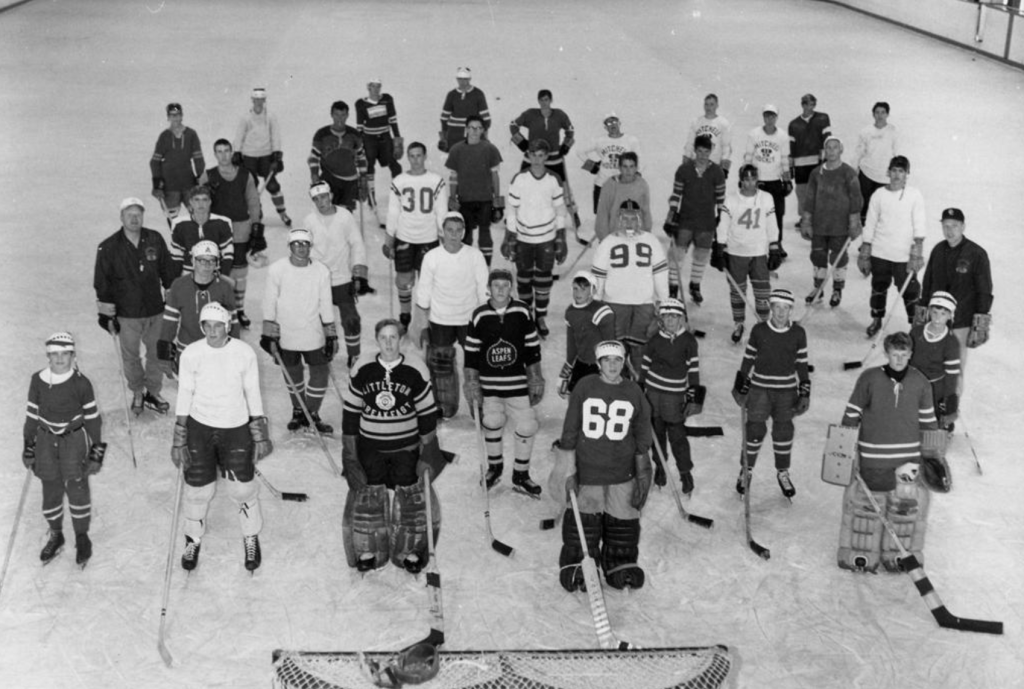
Certainly, a lot has changed in 60 years. In the early days of the camp, many of the attendees were older teens hoping to earn a roster spot on Bob Johnson’s squad at Wisconsin. Today, it’s a much younger group of players, with about a third of them being girls. McConnell said about 30% of today’s camp comes from the Roaring Fork Valley, with the rest mostly coming from out of state.
The school is now run out of Lewis Ice Arena and the players are responsible for their own housing for the week, but the camp’s legacy remains alive and well.
To celebrate 60 years, the directors will host a get-together for the community on Monday, July 21, from 4-7 p.m. at Buck bar in Aspen. It will be a casual affair for attendees past and present to reminisce on what the camp has meant to them over the years.
“To have a hockey school and sustain it for so long, it’s actually quite impressive. The people in Aspen have been very supportive,” Mark Johnson said. “The most important part is it’s a game. We call it a hockey game, so on top of working on the things we feel are important for the foundations of becoming a good hockey player, it’s (important) to have fun. We throw that in there and we enjoy ourselves, so we create a positive atmosphere.”
For more on the school, visit bobjohnsonhockeyschool.com.
acolbert@aspentimes.com
College Sports
Fox Chapel hockey hosts program for young players
The Fox Chapel hockey club will introduce a new program to spark interest in younger age groups. The Foxes will host a free skate with the varsity team July 27 at the Alpha Ice Complex. The program is available to students in Fox Chapel school district who are entering first through sixth grades. The clinic […]
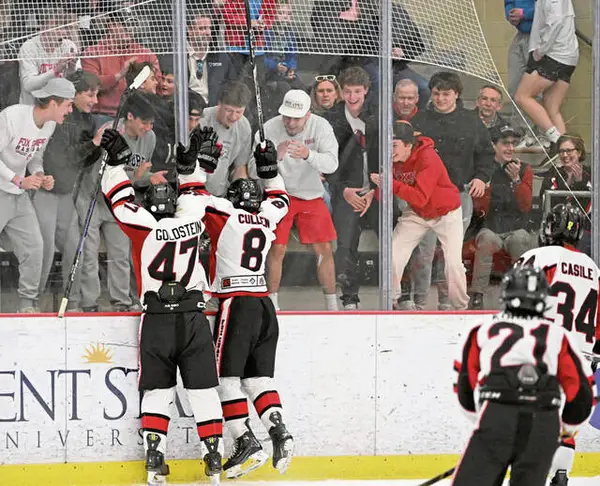
The Fox Chapel hockey club will introduce a new program to spark interest in younger age groups. The Foxes will host a free skate with the varsity team July 27 at the Alpha Ice Complex.
The program is available to students in Fox Chapel school district who are entering first through sixth grades. The clinic will focus on teaching young players the basics of shooting, passing and other skills.
Fox Chapel’s hockey team reached the Class 2A Penguins Cup final last season before losing to Erie McDowell in overtime. The Foxes have reached the Pens Cup final in two of the past three seasons.
Van Norman commits
Shady Side Academy’s Ella Van Norman committed to Hamilton (N.Y.) College for track and field. Van Norman was part of a dominant 3,200-meter relay team this past spring along with Rhyley Bendel, Charlotte Barker and Sarah Kushnir.
The Bulldogs relay team won the WPIAL Class 2A title to qualify for states. Van Norman helped Shady Side Academy finish fifth at states. Van Norman, who will be a senior, also qualified individually in the 1,600-meter run.
She placed 16th in the 1,600 with a time of 5 minutes, 15.70 seconds.
McKee scores
Fox Chapel junior Emily McKee participated in the inaugural Girls Academy League national section game. McKee scored a goal during a camp earlier in July.
Summer skills camp
The Fox Chapel girls basketball program will host a summer skills camp July 29-30. The event will be held at the Fox Chapel High School and cost $35 per session.
College Sports
Thomas Walsh – Video Coordinator/Tight Ends – Football Coaches
Choose a Staff Member: Archetto, Peter Berardelli, Dylan Duell, Thomas Engle, Nathan Flores, Nick Gardner, Eli Hebert, Dan Jones, Kyle Maher, Jerry Rice, Chris Royall, Tyler Walsh, Thomas […]
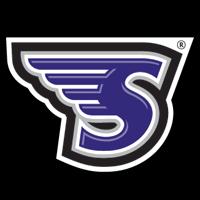
Primary Recruiting Areas: Massachusetts (Essex county), Maine, Vermont, New Hampshire, Rhode Island, New York (Long Island & Staten Island)
Thomas Walsh returns to his alma mater to begin his first season as Video Coordinator and Tight Ends coach for head coach Eli Gardner and the Stonehill football program ahead of the 2025 season.
Most recently, Walsh spent the 2024 season at Wagner College, where he was the Offensive Line Coach, Run Game Coordinator, and an Offensive Quality Control Coach for the Seahawks football program.
At Wagner, Walsh was responsible for scouting reports, run game installation, recruiting in Connecticut, Ohio, and Texas high schools, as well as transfer offensive line recruiting.
While at Stonehill, Walsh was a five-year starter on the offensive line, a two-time team captain, and was named to the NE10 All-Conference Second Team and the Phil Steele FCS All-NEC Team. Walsh also interned in the Stonehill Equipment room as a student-athlete.
The Waldwick, New Jersey native graduated from Stonehill in 2023 with a bachelor’s degree in Marketing. Walsh will receive his MBA in Business Management from Wagner College.
College Sports
Winnipeg Jets 2025-26 Schedule – Arctic Ice Hockey
On Wednesday the National Hockey League officially released the 2025-26 schedule, giving fans the opportunity to see exactly what obstacles lay in the way of a playoff berth. When it comes to our Winnipeg Jets, I didn’t really get the chance to dive into the schedule fully until this weekend….but now that I have, I […]

On Wednesday the National Hockey League officially released the 2025-26 schedule, giving fans the opportunity to see exactly what obstacles lay in the way of a playoff berth. When it comes to our Winnipeg Jets, I didn’t really get the chance to dive into the schedule fully until this weekend….but now that I have, I figured I might as well lay out what I discovered is in store for the True North franchise this season.
I am not planning on outlining each game in this article, so if you want to see the entire schedule, following the link below to ESPN:
https://www.espn.com/nhl/team/schedule/_/name/wpg/seasontype/2
By using last year’s results, I will attempt to assess the strength of competition Winnipeg can expect this year. Statistically, of the 16 NHL clubs that qualified for the playoffs last year, only 2 to 4 of them will fail to make the playoffs this year….so it should at least put us in the ballpark of when the Jets will face the top half of the league. However, before I get to that…here are some other highlights for the upcoming campaign:
Back-to-Backs: (8)
- 1 in October (23rd-24th) – vs SEA & CGY
- 1 in November (28th-29th) – @ CAR & @ NSH
- 1 in December (5th-6th) – vs BUF & @ EDM
- 2 in January (8th-9th & 19th-20th) – vs EDM & LA – @ CHI & vs STL
- 2 in March (14th-15th & 21st-22nd) – vs COL & STL – @ PIT & @ NYR
- 1 in April (13th-14th) – @ VEG & @ UTH
Road trips:
- 6 games – Nov 4th to 15th – LA, SJ, ANA, VAN, SEA, CGY
- 5 games – Nov 26th to Dec 3rd – WSH, CAR, NSH, BUF, MTL
- Two 4 game treks – Jan 27th to Feb 2nd (NJ, TB, FLA, DAL) & Mar 28th to Apr 4th (COL, CHI, DAL, CLM)
- Four 3 game trips – Dec 17th to 21th (STL, COL, UTH), Dec 31st to Jan 3rd (DET, TOR, OTT), Feb 25th to March 1st (VAN, ANA, SJ), & March 19th to 22nd (BOS, PIT, NYR).
Home stands:
- 8 games – March 3rd to 17th – CHI, TB, VAN, ANA, NYR, COL, STL, NSH
- 5 games – Jan 6th to 13th – VEG, EDM, LA, NJ, NYI
- 4 games – Dec 9th to 15th – DAL, BOS, WSH, OTT
- Three 3 game sets – Oct 23rd to 26th (SEA, CGY, UTH), Nov 18th to 23rd (CLM, CAR, MIN), & Jan 20th to 24th (STL, FLA, DET).
Because of the break required for NHL players to participate in the 2026 Winter Olympics (Feb 5th to 24th), once again the clubs will face a condensed schedule and that resulted in Winnipeg having more back-to-back situations than last year when the Four Nations tournament disrupted things (6 vs 8).
November will be a travel heavy month for the Jets, as they will play 69% of the games on the road (9 of 13), which is just ahead of April’s 62.5% (5 of 8). Yet it is during the limited NHL action in February that Winnipeg will visit the opposition’s arenas most often (75% – 3 of 4). Other than the break even month of December (7 of 14), the True Northers will hit the ice at the Canada Life Centre more often for the remaining periods: October (63.6%), January (56.3%), & March (62.5%).
In the graphic below, I broke down the Winnipeg Jets’ schedule by month, outlining home/road games and the strength of opposition our team will face.

A positive sign that the Jets’ path to the playoffs might be easier than normal is due to it going through clubs that earned an average of 89.6 points last year, which wouldn’t have been enough to qualify for the post-season (96 pts in West, 91 pts in East).
Another good omen for Winnipeg is the lack of top end competition early on in the season. With captain Adam Lowry having hip surgery on May 27th and expected to need 5 or 6 months to recover, it is nice to see that the Jets’ early bouts won’t include many playoff teams (just 4 of the opening 21 contests). When I pull out the calendar, it would seem that we might expect the big center to return sometime between October 13th and November 10th, which could see Lowry only missing 2/3 regular season matches (vs DAL, LA, NYI) up to 15/16 clashes (only incl. playoff teams DAL, LA, CAR). That should help our club put up some “W’s” while they await the big guys’ return.
And that is important in the NHL. I’m sure that we’ve all heard the old stat about American Thanksgiving that says any franchise holding onto a playoff spot at that early point of the regular season has an 80% chance of qualifying for the dance. Well, that holiday falls on November 27th this year and Winnipeg will have only played 22 games at that point. With 68% of those contests against the league’s bottom half, it should give the Jets a great chance to grab a playoff spot early.
And they will need it too. The coldest stretch of the year in Manitoba will also provide this year’s club its most difficult test. Once the calendar flips to December, the road gets much bumpier for the Jets, over the next three months Winnipeg will see last year’s playoff teams facing off against them a whopping 73.5% of the time. The month of January in particular is very scary, with 13 of 16 games against the top half, including a stretch of 6 straight contests to kick off the New Year (TOR, OTT, VEG, EDM, LA, NJ).
Fortunately for our squad’s playoff hopes, the schedule eases up in the final two months (24 gms), allowing Winnipeg the opportunity to feast on 62.5% lower half teams as the regular season draws to a close.
Well, that wraps up my look at the upcoming Winnipeg Jets’ schedule. Without knowing exactly what every NHL team will look like when the action kicks off on October 7th, it at least appears the True Northers have a good shot at a return to the post-season. What do you think??
-

 College Sports2 weeks ago
College Sports2 weeks agoWhy a rising mid-major power with an NCAA Tournament team opted out of revenue-sharing — and advertised it
-

 Motorsports2 weeks ago
Motorsports2 weeks agoTeam Penske names new leadership
-

 Youtube3 weeks ago
Youtube3 weeks ago🚨 BREAKING: NBA MVP Shai Gilgeous-Alexander signs the RICHEST annual salary in league history
-

 Sports2 weeks ago
Sports2 weeks agoNew 'Bosch' spin
-

 Sports5 days ago
Sports5 days agoVolleyball Releases 2025 Schedule – Niagara University Athletics
-

 Fashion7 days ago
Fashion7 days agoEA Sports College Football 26 review – They got us in the first half, not gonna lie
-

 Sports2 weeks ago
Sports2 weeks agoE.l.f Cosmetics Builds Sports Marketing Game Plan Toward Bigger Goals
-

 College Sports2 weeks ago
College Sports2 weeks agoMSU Hockey News – The Only Colors
-

 College Sports1 week ago
College Sports1 week agoBuford DB Tyriq Green Commits to Georgia
-

 Health7 days ago
Health7 days agoCAREGD Trademark Hits the Streets for Mental Health Month





























